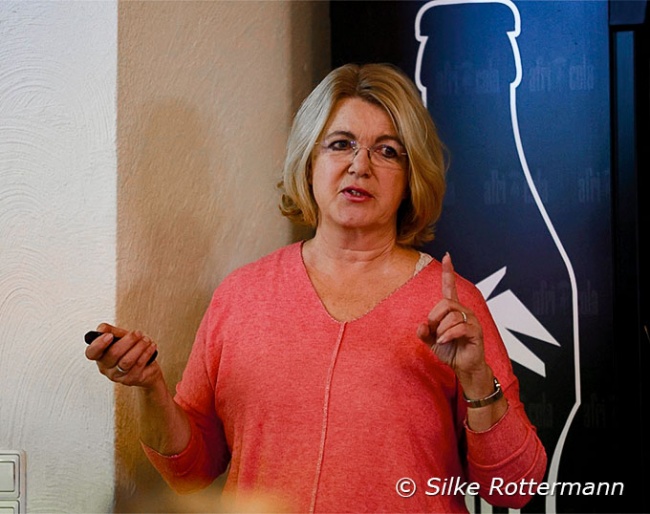
this article is a continuation of Today for Tomorrow - A Weekend Dedicated to Good Equestrian Sport at the 2024 Burgtagung
-- Text and Photos © Silke Rottermann for Eurodressage
The Agony of Choice
With 20 short seminars on Saturday and 10 on Sunday, running from 8:30 am to 5:00 pm, one had the agony of choice which ones to attend on both days. With the dressage orientated readership of Eurodressage in the back of my mind, I tried to choose wisely and picked those seminars which touched upon this discipline and I was lucky that there was almost no overlapping time.
On Sunday morning, already feeling a bit tired from the past two days with lots of input and little sleep, I was happy that it was a mere 50 meters from my youth hostel room to go to the seminar room, where Dr. Britta Schöffmann managed a demanding topic that seems very current these days.
Dr. Britta Schöffmann: Everything Was Better In The Past, Wasn’t it?"
Dr. Britta Schöffmann is a well-known name in Germany. Having successfully competed up to Grand Prix, she had been the chief editor of the big Reiter Revue magazine for several years and has written a bunch of training books as well as produced training videos. Clearly stamped by classical trainers such as the late Fritz Tempelmann, the late Willi Schultheis and Harry Boldt, Schöffmann has garnered undisputed expertise and has been sought after by the German Federation when the guidelines were revised.
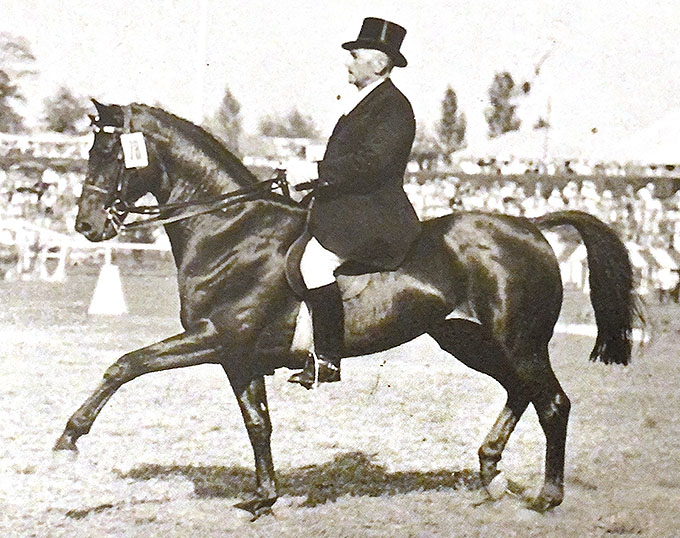
and the thoroughbred Chronist xx who was
known for disadvantageous conformation
One couldn’t evade the feeling the past years that proportional to the trouble international dressage faces for a long time, exactly this topic is growing, overall on social media. Having occupied myself extensively for many years with the history of dressage, I am well aware that certain problems are existent for as long as dressage sport is alive, while other issues are more recent and probably have its foundation in the commercialisation of the discipline as well as the significant improvement of dressage horse breeding.
I was curious to find out how Dr. Schöffmann would tackle this wide field.
Disconnected Diagonals
"We see many bad pictures which appear repeatedly on the internet and they are the reason that there is this thesis 'in the past all was better.' Let us follow the question if this thesis is actually accurate," Schöffmann began her lecture. She took about 20 auditors right into the topic by showing several photos of the so-called "old masters," a term she would elaborate on a bit later. There were some appealing and some strikingly ugly copper engravings and photos to be seen, among them one of Otto Lörke riding the Vornholz thoroughbred stallion Chronist xx. Now on this photo the horse was clearly showing the disconnected diagonals that 70 years later epitomise modern dressage, for which it has become infamous.
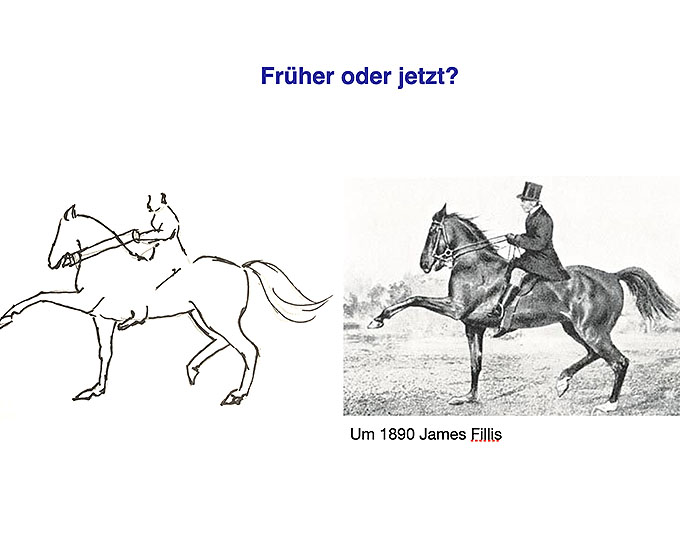
the Englishman James Fillis and Germinal xx, approx 1890
Schöffmann doubted that there had ever been Old Masters in this sense "because the representatives of the different schools were always in unison," instead she wished the term to be understood as "a longstanding amassing of experiences which is nowadays the fundament of modern equitation that are the classical principles."
Comparing Past and Present
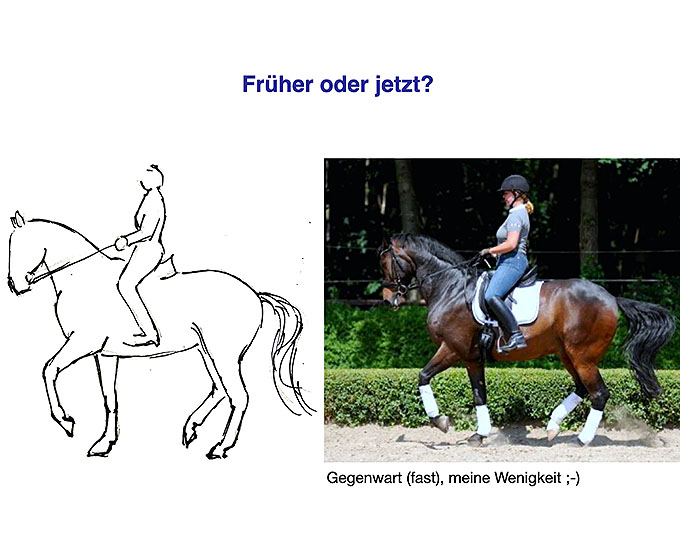
which served the cognitive process of the auditors
(Photo © Barbara Schnell)
It was obvious that these drawings were "moments in time" so the audience would judge them on what Plewa called "formalistic viewpoints," in his opening lecture on Friday. It was clearly not Schöffmann’s aim to initiate a kind of judges’ seminar for the auditors, but with this process she aimed to raise awareness that good and bad equitation is timeless. It was quite interesting to observe this process Schöffmann got going.
First the majority of attendants assumed the „good old times“ when a movement looked good or „the doubtable modern times“ as soon as a movement was rather bad. Formalities such as a sagging back, a short neck or the poll not being the highest point were first matched to a silhouette in sport nowadays, whereas the opposites were at the beginning often matched to the past. Personally I liked to play the game as well, but it soon became obvious that Schöffmann wanted to make us aware that we should rather look for the quality of the movement than the times in which it was ridden. So from my viewpoint I looked at the seat and position of the rider more than the horse. Here we could more often recognize the time in which the corresponding photo had been taken.
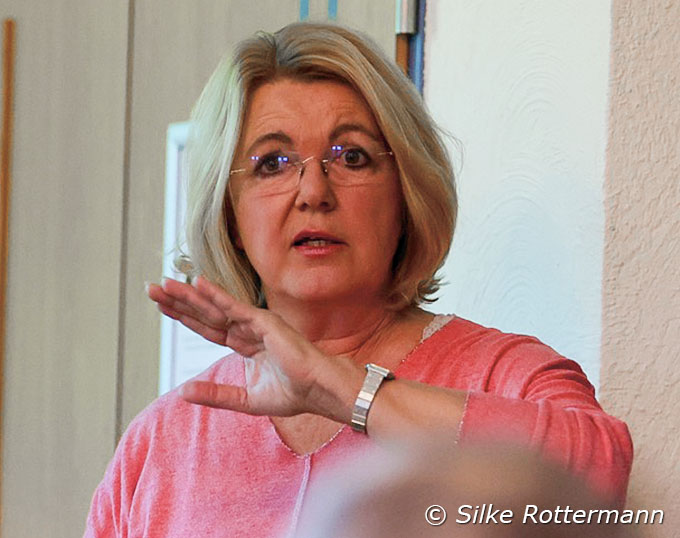
the quality of dressage now and then
Soon coming about Burgtagung conference:
2024 Burgtagung: Anja Beran - "Schooling The Eye"
2024 Burgtagung: Fair and Delightful Dressage Training with Uta Gräf and Anja Beran
2024 Burgtagung: Uta Gräf and Anja Beran: "If the Basis is Correct, It's Easy for the Horse"
Related Link
Today for Tomorrow - A Weekend Dedicated to Good Equestrian Sport at the 2024 Burgtagung